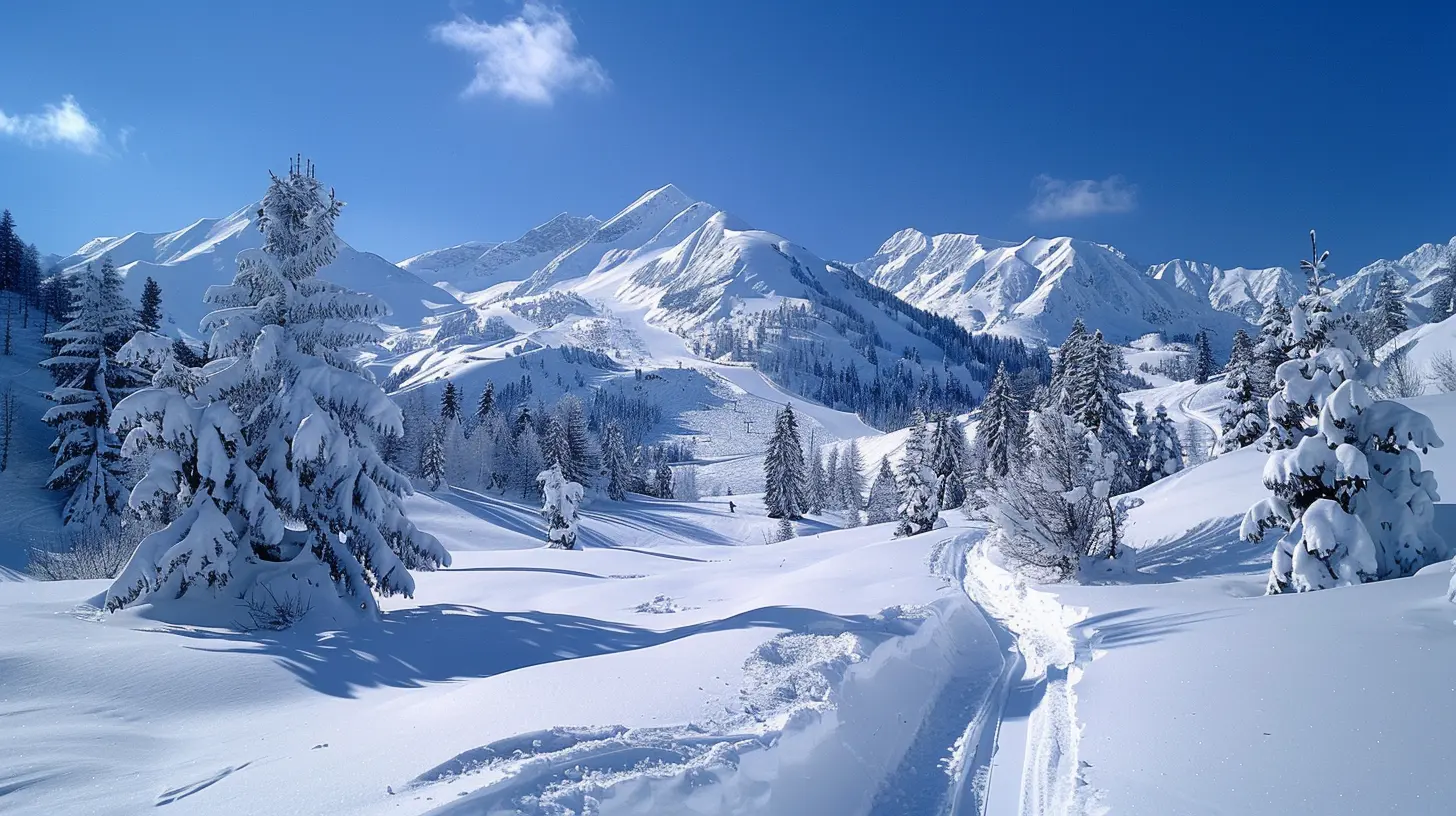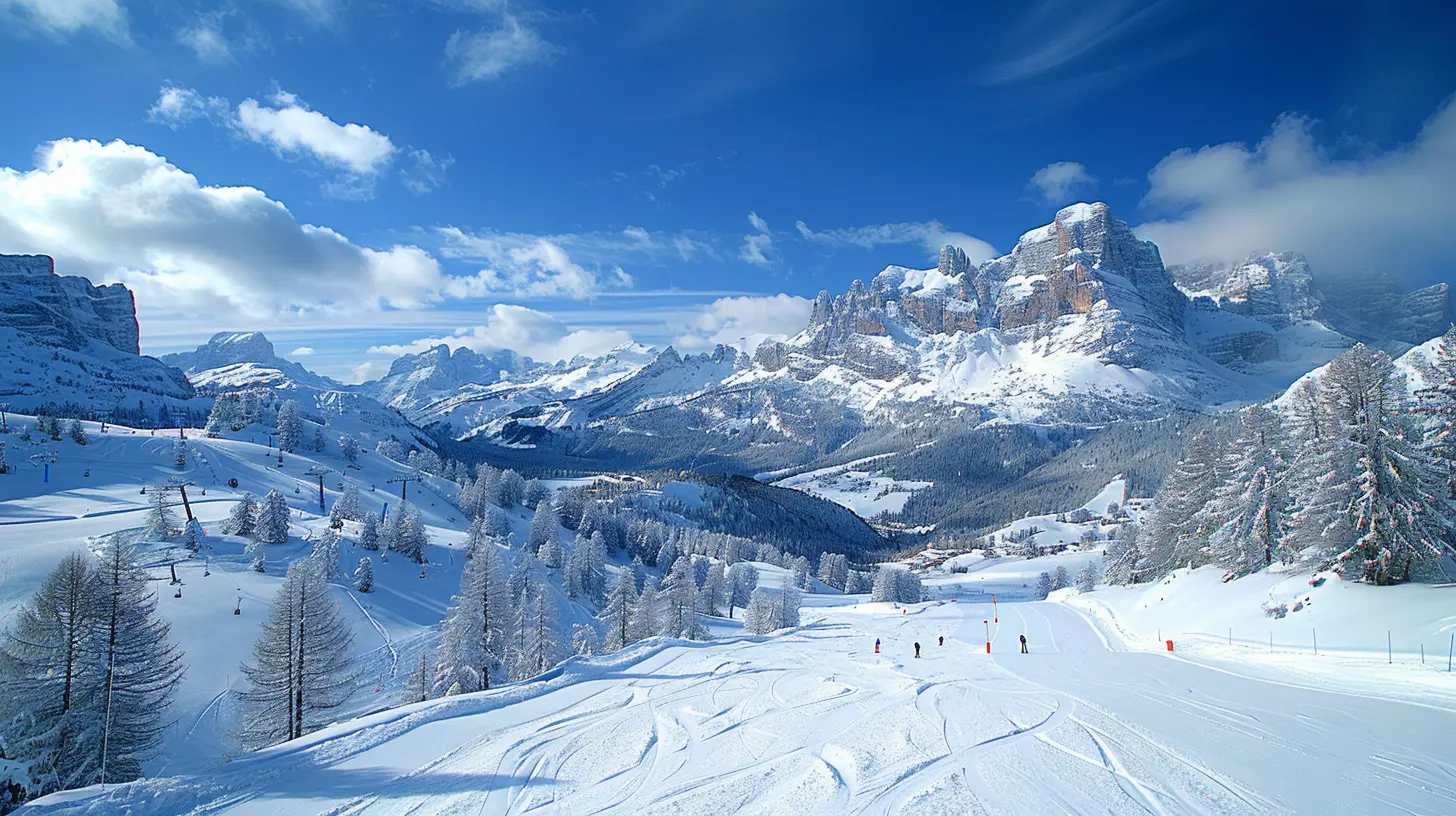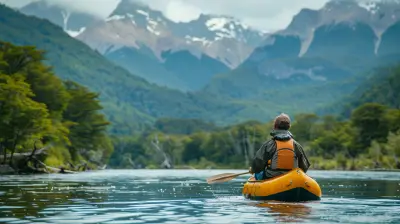Dive into Nature: UNESCO's Most Beautiful Natural Heritage Sites
23 May 2025
Mother Nature is a brilliant artist, and her finest works are showcased across our planet in awe-inspiring landscapes, towering mountains, ethereal forests, and crystal-clear waters. But, across the globe, there are some places so spectacular that they’ve earned a spot on the prestigious UNESCO World Heritage list. These are the places that make you stop in your tracks, reminding you that Earth is a lot more than just a collection of cities and towns.
In this blog, we’re taking a journey through some of the most breathtakingly beautiful natural heritage sites recognized by UNESCO. So, put on your virtual hiking boots because we’re about to dive into nature’s greatest wonders!

What is a UNESCO Natural Heritage Site?
Before we dive in, let’s get a quick understanding of what it means to be a UNESCO World Heritage site. UNESCO (United Nations Educational, Scientific, and Cultural Organization) designates specific landmarks or areas for their cultural, historical, scientific, or natural significance. Some of these spots are chosen because they’re essential to human history, while others are picked due to their outstanding natural beauty and ecological importance.Natural heritage sites, in particular, are areas that blow you away with how pristine, rare, or simply surreal they are. Whether it’s a jaw-dropping mountain range, a unique biodiversity hotspot, or an ancient forest, these sites are testaments to nature’s grandeur.
Now, let’s dive right in!
1. Great Barrier Reef (Australia)
It would be a challenge to start this off with anything but the Great Barrier Reef—the largest coral reef system in the world. Located off the coast of Queensland, Australia, this underwater paradise spans over 344,000 square kilometers. Just imagine swimming through an underwater city made from corals, teeming with life!The sheer size and diversity of marine life here are staggering. It’s home to more than 1,500 species of fish, 400 types of coral, and countless other marine organisms. You might also spot sea turtles, sharks, rays, and, if you're lucky, a gentle humpback whale gliding through the blue!
Sadly, this vibrant ecosystem faces threats from climate change, including coral bleaching. But efforts are being made to protect and preserve this mesmerizing habitat, ensuring future generations can continue to marvel at it.
Pro Tip: If you’re planning a visit, consider eco-friendly tour operators who are dedicated to preserving the reef while providing an unbelievable experience.
2. Ha Long Bay (Vietnam)
Picture a misty bay, dotted with thousands of limestone islets, each towering over the emerald-green waters. This is Ha Long Bay, an otherworldly seascape on the northeastern coast of Vietnam. The name Ha Long means "descending dragon," and legend has it that these natural formations were created by a mother dragon who came down from the heavens to protect the country.The bay is so striking that it feels as though you’ve been transported to another planet. As you slowly cruise on a traditional junk boat, you'll pass by numerous caves, grottos, and lagoons, each more magical than the last. For adventurers, kayaking through the winding waterways around the islets adds a thrilling touch to your visit.
Ha Long Bay isn’t just about beauty, though. It’s a biodiversity hotspot, home to a wide range of marine species and rich in history and culture.
When to Visit: The best time to explore this natural wonder is between October and April when the weather is mild and less humid.
3. Galápagos Islands (Ecuador)
The Galápagos Islands are like nowhere else on Earth. Located about 1,000 kilometers off the coast of Ecuador, these volcanic islands played a pivotal role in Charles Darwin’s theory of evolution. The islands are a living museum of biodiversity, housing species that you can't find anywhere else—like the famous Galápagos tortoises, marine iguanas, and blue-footed boobies.Each island in the archipelago has its unique ecosystem and species, making every visit a new experience. You can walk among sunbathing sea lions one day and swim with curious penguins the next. What’s astounding is how unafraid the animals are of humans, as if you’ve stepped into a world where humans and wildlife share mutual respect.
For nature enthusiasts, the Galápagos are the ultimate bucket-list destination. From snorkeling in the crystal-clear waters to hiking over blackened lava fields, it’s an untamed paradise that continues to inspire us.
Important Note: Due to its fragile ecosystem, tourism in the Galápagos is strictly regulated, so book your trip well in advance.
4. Yosemite National Park (United States)
Yosemite Valley is nature on a grand scale. Think massive granite cliffs, cascading waterfalls, giant sequoias, and sprawling meadows. Located in California’s Sierra Nevada mountains, Yosemite National Park is one of the most visited parks in the United States—and for a good reason.El Capitan, Half Dome, and Yosemite Falls are some of the most iconic landmarks in the park, offering daring hikers and climbers the adventure of a lifetime. Even if you’re not scaling sheer rock faces, Yosemite’s scenic drives, serene hiking trails, and wildlife-watching opportunities will leave you in awe. The park is also home to ancient sequoia trees, with roots stretching back over 3,000 years!
With its otherworldly landscapes and diverse ecosystems, Yosemite offers visitors the chance to reconnect with nature—and it’s bound to leave you with a new perspective.
Quick Tip: To avoid the crowds, visit during the off-season in spring or fall when the park is less busy but still supremely beautiful.
5. Plitvice Lakes National Park (Croatia)
If you’ve ever dreamt of wandering through a fairytale forest where waterfalls tumble into turquoise lakes, then Plitvice Lakes National Park in Croatia is the place for you. This UNESCO World Heritage site is made up of 16 terraced lakes, connected by waterfalls and surrounded by lush greenery.What makes this park so magical is its crystal-clear water, which shifts between shades of green and blue depending on the angle of sunlight. Wooden walkways wind their way over the water and through the forest, allowing visitors to get up close to the cascading waterfalls.
The park is a sanctuary for wildlife too—you might even catch a glimpse of a brown bear, lynx, or wolf as you explore the trails.
Best Time to Visit: While the lakes are accessible year-round, the most stunning time to visit is in spring or fall when the waterfalls are at their fullest, and the colors of the foliage are vibrant.
6. Serengeti National Park (Tanzania)
No list of natural wonders is complete without mentioning Africa’s Serengeti. This vast savanna, stretching through Tanzania into Kenya (where it’s known as the Maasai Mara), is famous for the Great Migration. Each year, millions of wildebeest, zebras, and gazelles embark on an incredible journey north in search of fresh grazing lands, pursued by hungry predators like lions, cheetahs, and crocodiles.But the Serengeti isn’t just about the migration. The park’s landscapes—golden grasslands, acacia trees, and distant mountains—are straight out of a National Geographic documentary. Whether you're watching a pride of lions laze in the afternoon sun or a lone giraffe strolling across the plains, the Serengeti is a place where nature feels raw and real in the best possible way.
Travel Tip: Safari options vary widely, from budget camping to luxurious lodges, so there’s something for everyone.
7. Mount Huangshan (China)
What do you get when you combine mystical peaks, ancient pine trees, and seas of clouds? Welcome to Mount Huangshan, one of China’s most famous and striking natural landmarks. Known as the "Yellow Mountain," this UNESCO site has been immortalized for centuries in Chinese art and literature. Just one look at the rugged granite peaks piercing through the clouds, and you’ll understand why.Hiking Huangshan is like stepping into a painting. Along the stone pathways, you’ll pass by twisting pine trees that have clung to the mountainsides for thousands of years. The area is also home to hot springs, waterfalls, and jaw-dropping views around every corner.
It’s no surprise that Mount Huangshan has been the inspiration for countless Chinese poets and painters. Once you’ve experienced its surreal beauty, you’ll feel inspired too!
Good to Know: Be prepared for steps—lots of them. But trust me, the views at the top are worth every single one.
Conclusion
There’s no denying it—our planet is extraordinary. These UNESCO natural heritage sites are just a few examples of the incredible diversity and beauty the Earth has to offer. From ancient forests and towering peaks to vast savannas and coral reefs, each destination offers a unique window into the magic of nature.Now, the big question is: which place will you explore first? Whether you’re drawn to the underwater wonders of the Great Barrier Reef or the surreal landscapes of Ha Long Bay, one thing’s for sure—Mother Nature never disappoints.
all images in this post were generated using AI tools
Category:
Unesco SitesAuthor:

Ian Powell
Discussion
rate this article
3 comments
Eli Wilcox
This article beautifully highlights the awe-inspiring natural beauty of UNESCO's heritage sites. Each location showcases unique landscapes and biodiversity, inviting travelers to immerse themselves in nature's wonders while promoting conservation. A must-read for eco-conscious adventurers!
June 18, 2025 at 2:42 PM

Ian Powell
Thank you for your thoughtful comment! I'm glad you enjoyed the article and appreciate the beauty and importance of UNESCO's heritage sites. Happy traveling!
Caelum McQuillan
This article beautifully highlights UNESCO's natural wonders, inspiring travelers to explore and appreciate nature's breathtaking diversity and significance.
May 31, 2025 at 2:37 AM

Ian Powell
Thank you for your kind words! I'm glad the article inspired you to explore UNESCO's incredible natural heritage.
Anika Cruz
Inspiring destinations for nature lovers!
May 25, 2025 at 4:25 PM

Ian Powell
Thank you! I'm glad you found the destinations inspiring. Nature's beauty truly knows no bounds!



